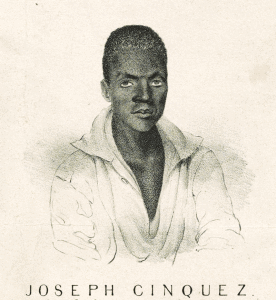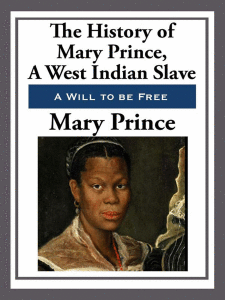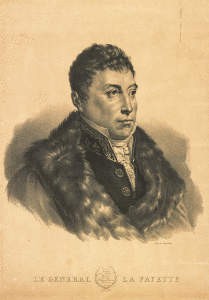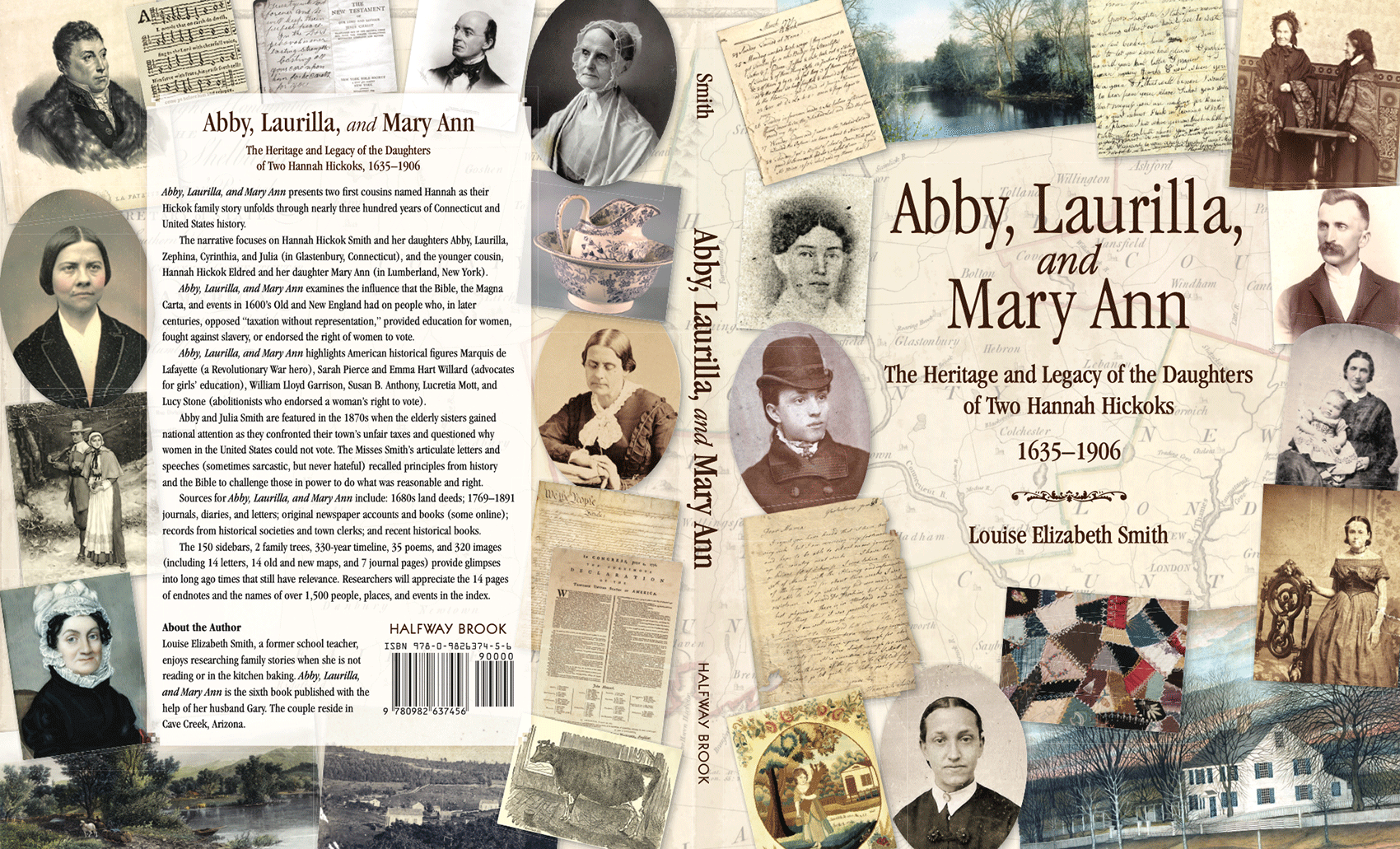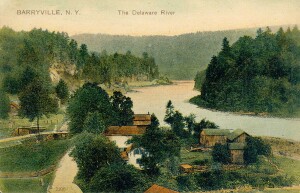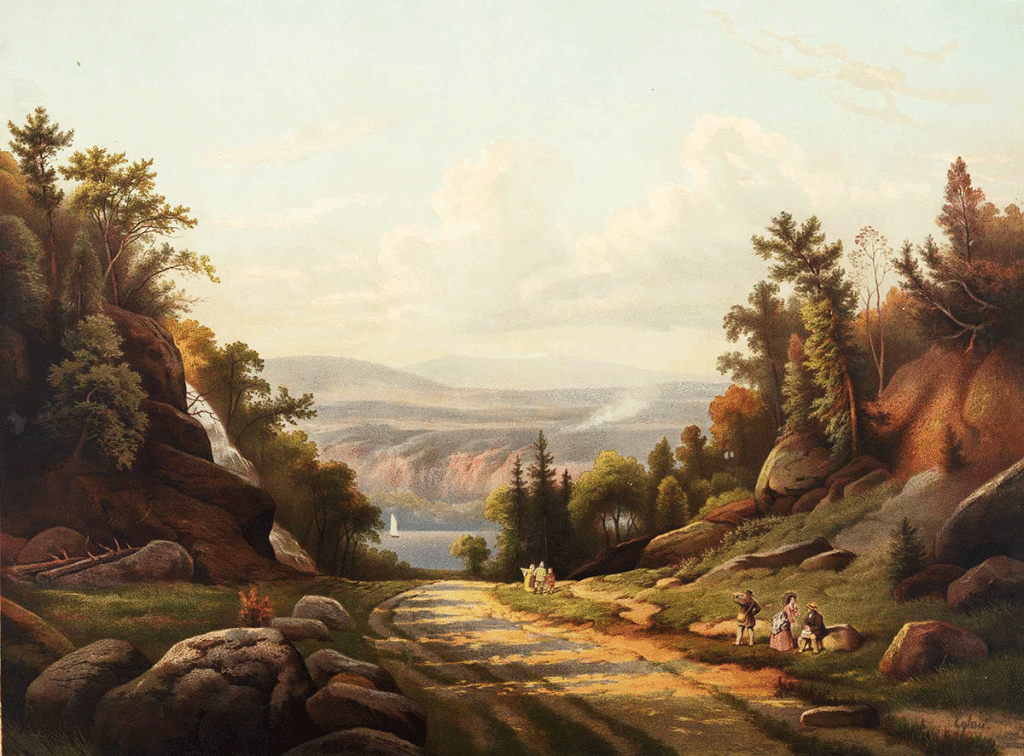
Hannah Hickok Eldred, her husband James, daughter Mary Ann, age three, and stepdaughter Phebe Maria, age fifteen, lived in a new two-story home.
Built in 1830, the house sat next to the old sawmill, a few hundred feet east of the main road.
Halfway Brook (further east) flowed four miles south to the Delaware River. The northwest corner of their property will eventually become part of Halfway Brook Village, and much later the village of Eldred.
In October 1831 James Eldred became the Postmaster for Lumberland. For the next twenty years one room in the Eldred home was set aside for the Lumberland Post Office. James also held positions as Lumberland’s Inspector of Schools and Town Clerk.
Lumberland Occupations
Lumberland was slowly entering the nineteenth century. The community’s economy continued to be connected with lumbering. But now jobs were available with the Delaware and Hudson (D&H) Canal, which had been designed by Benjamin Wright, the chief engineer of the Erie Canal.
Starting in 1828 the D&H Canal transported anthracite coal on mule-pulled barges, from the mountains of Honesdale, Pennsylvania, to Rondout (near Kingston), New York, on the Hudson River. Passengers could travel the 108-mile, man-made waterway.
Seventeen miles of the D&H Canal followed the Delaware River at Lumberland’s southwest border. The D&H Canal operated stores, an office, and a dry dock, in Barryville. The developing hamlet soon boasted a blacksmith shop, a gristmill, a broom handle factory, and a business which would grind feed or saw lumber for customers.
Travel in and to Lumberland
Traveling in Lumberland was difficult whether walking, riding a horse, or traveling by coach. A ferry was still the only way to cross the Delaware River from Barryville to Shohola, Pennsylvania.
There were two ways to reach Lumberland from New York City. Both involved sailing north on the Hudson River. Continue reading

